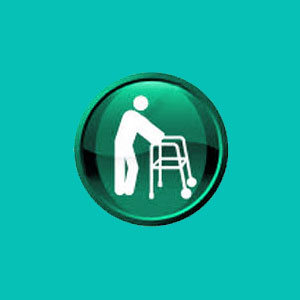
Spinal aging causes herniated discs. It is a fact of life. However, most age-induced herniations are not symptomatic, making most intervertebral bulging conditions incidental to any back pain that might be experienced. Herniated discs can be problematic and occasionally can even become disabling. However, these circumstances represent the extreme exceptions to the rule stating that most intervertebral abnormalities are not pathological.
Degenerative disc disease, also called disc desiccation, is the process that universally affects intervertebral spinal spacers as we get older. This spinal aging is most noticeably expressed in the lumbar and cervical regions, but can be found throughout the vertebral column.
We have spent almost 2 decades discussing how degenerative disc disease is a mostly harmless process, but still receive many questions asking if it is a direct cause of herniated discs. Therefore, we provide this essay to detail how and why age-related changes do indeed facilitate herniated discs.
Why Spinal Aging Causes Herniated Discs
Age changes every tissue of our anatomy. It is scientifically proven that every human structure changes in response to age, from our hair to our skin to our brain to our internal organs. Our skeleton changes. Our musculature changes. Even our fat distribution is altered by the mere passage of time. No bodily structure or system is spared the effects of time.
Spinal discs are certainly no exception to this rule. Age causes the intervertebral discs to experience changes that have been come to be called degenerative disc disease. This ridiculous diagnostic terminology is both redundant and illogical. First, the condition affects every human of age, making it a normal part of life, rather than a diagnosed atypicality. Second, the condition is not a disease, but instead, simply a series of normal changes in the structure of the spinal discs. The evidence of DDD can be seen without any type of medical imaging. In fact, one of the easiest to observe evidence-based proof of disc degeneration is the fact that people get shorter as they get older. The major reasons why this occurs is the loss of moisture in the discs, leading to a flattering of the tissues and a loss of overall length in the vertebral column. Yes, age makes us get shorter also, mostly due to disc degeneration.
How Spinal Aging Causes Bulging Discs
Age causes the discs to lose moisture and flatten out. However, this desiccation does not only make discs smaller, it also deteriorates their outer annulus fibrosus, which is the wall that encapsulates the soft inner core of the disc called the nucleus pulposus. When this wall becomes degenerated, it loses strength and the ability to contain the disc nucleus. It is this process that directly facilitates herniations.
When the outer disc wall weakens, it tends to bulge asymmetrically in response to stresses that constantly bombard the spine. Instead of simply accommodating the stress, the disc becomes incapable of rebounding and develops a bulge, called a herniation. In some cases, the disc might spontaneously rupture due to particularly acute stress or when truly degenerated past its effective lifespan.
All of these scenarios are the results of normal age-related changes and are not inherently linked to injury. Trauma might hasten intervertebral bulging, but in most instances, the degeneration and subsequent herniation would have occurred anyway over time.
Consequences When Spinal Aging Causes Herniated Discs
Herniated discs that occur due to spinal aging are usually the least symptomatic. Many occur and are not found for many years. In fact, we routinely receive imaging reports of people who recently developed back pain, but demonstrate the evidence of herniations that have calcified over twenty years ago.
Additionally, aged discs that herniate due to trauma have a lower chance of being acutely symptomatic than young, healthy discs. This is because of the greater mass of the younger, healthier nucleus and its capability of asserting more force against neurological tissue, as well as the pressured force exhibited when intervertebral ruptures occur and the annulus is fully intact and vital. Older discs tend to bulge less and rupture gently, rarely creating the right circumstances for any significant symptoms to occur. Since the nucleus in older discs is also smaller in mass, it contains less irritating proteins that would otherwise be capable of enacting chemical radiculitis, as well.
All of these factors add up to create the fact that any scientific mind would expect to find, and the fact that we have been teaching for the past 16 years plus: Most herniations are nonissues and those created by spinal aging are even more likely to be completely asymptomatic or only mildly and temporarily symptomatic. The chances for an age-related herniated disc causing severe and chronic pain are very low, despite the common misdiagnosis of these conditions throughout the orthopedic community of medicine.
Herniated Disc > Causes of a Herniated Disc > Spinal Aging Causes Herniated Discs





